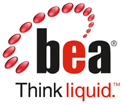David McGoveran (born 1952) is an American computer scientist and physicist, software industry analyst, and inventor. In computer science, he is recognized as one of the pioneers of relational database theory.
David McGoveran (born 1952) is an American computer scientist and physicist, software industry analyst, and inventor. In computer science, he is recognized as one of the pioneers of relational database theory.
David McGoveran majored in physics and mathematics, and minored in cognition and communication at the University of Chicago from 1973 to 1976, with graduate studies in physics and psycholinguistics. He pursued additional graduate studies from 1976 to 1979 at Stanford University.
While a student he was employed by the Enrico Fermi Institute's Laboratory for Astrophysics and Space Research (Chicago 1973-4), Dow Chemical Company's Western Applied Science and Technology Laboratories (Walnut Creek, CA 1974), and University of Chicago Hospitals and Clinics (1975-6). After graduation from University of Chicago, he founded the consulting firm of Alternative Technologies [1] (Menlo Park, CA 1976) under the mentoring of H. Dean Brown and Cuthbert Hurd. While starting his consulting practice, he worked at SRI International (1976-9), his first consulting client. [2]
Between 1979 and 1981, he taught electronics engineering in the Professional Engineering Institute at Menlo College (Redwood City, CA) and was Chairman of the Computer Science and Business Departments at Condie College (San Jose, CA), developing the schools bachelor program in computer science. [3]
Alternative Technologies has provided consulting on the design and development of numerous software systems, specializing in mission critical and distributed applications. Clients have included AT&T, Blue Cross, Digital Equipment, Goldman Sachs, HP, IBM, Microsoft, MCI-Worldcom, Oracle, and many others. [4]
McGoveran's software engineering contributions include a collaborative conferencing system (1978); multi-tier relational CIM (computer integrated manufacturing) system (Fasttrack, 1982); relational access manager (1984–89); international electronic funds transfer (1984); trading systems databases (1986–91); OLCP requirements (1986); an object-relational portfolio management (1986–89); first Sybase SQL Server PC client (1987); client-server API requirements (1988); object-relational API requirements (1990); query optimizer requirements (1990); first middleware market analysis and forecast (1991); Database Connectivity Benchmark (1993); [5] numerous high availability and scalable systems (1994–96); and designed BPMS products and established the BPM [6] category (1998-2000) with HP and IBM.
He has chaired various professional conferences (1975-2001). He assesses software opportunities and risks for vendors, venture capitalists and other investors; and occasionally serves as an expert in software intellectual property litigation.
Work on applications of mathematical logic has pervaded Mr. McGoveran's career (1971–present). He has done original research and published on the structure of paradoxes, [7] applications of quantum logic to schizophrenia, [8] linguistic logic [9] and computational semantics (under James D. McCawley), fuzzy logic, [10] [11] [12] and applications of logic, including multi-valued logics, to databases. [13] [14] [15] [16] [17] [18]
Beginning in 1981, [19] [20] Mr. McGoveran began consulting on the design of transaction processing systems, including distributed transactions. Investigations into the complexity and cost of distributed transactions, as well as the difficulty of maintaining transactional consistency in online applications led to research into alternatives to the traditional transaction models that used pessimistic concurrency control and enforced ACID properties. [21] McGoveran defined physical transactions as the unit of recovery, logical transactions as the unit of consistency, and business transactions as the unit of audit [22] The resulting adaptive transaction model introduces a transaction intrinsic definition of consistency, deferring the decision to combine the results of two or more transactions. His work on transaction management resulted in the award of US Patent No 7,103,597. [23]
McGoveran's research on E.F. Codd's relational model has focused on the issues of data modeling (database design), missing information, and view updating. The last two are considered by some database researchers to be the most difficult and controversial problems in relational database research. [24]
Having worked on the design and development of several early large scale, distributed, commercial relational database applications, [25] [26] McGoveran sought to improve upon the science of database design. This work lead to the development of
His work on logic applied to relational databases and on design without nulls (1993) has been republished several times. [30] [31]
McGoveran tackled the problem of view updating with Christopher J. Date starting in 1993 after having developed methods for reversible schema migration for clients on Wall Street. [32] His solution, based on relation predicates, formed the basis for the algorithms found in The Third Manifesto (Christopher J. Date, Hugh Darwen) for updating virtual relations (e.g., views). Date has credited McGoveran with originally suggesting the basic idea for the view updating approach, [33] and which Hugh Darwen [34] says represented a major shift in thinking on the issue. This work has resulted in two patents (U.S. Patent 7,620,664 and U.S. Patent 7,263,512).
Some of McGoveran's work on databases is discussed at Fabian Pascal's Database Debunkings web site. [35]
After consulting on numerous data integration and enterprise application integration projects, and related middleware products, McGoveran recognized that process aspects of integration were largely overlooked. [36] [37] Most business process technology focused on analyzing and documenting existing business processes, then manually "reengineering" the processes to eliminate waste, remove bottlenecks, and improve cycle times. These efforts were largely disjoint from process automation systems and distributed control systems (which focused on highly repetitive, often continuous processes), and workflow technologies (which focused on highly repetitive sequential processes like document processing).
McGoveran postulated [38] an analogy between data management and process management. [39] Just as the relational data model proposed separating the logical model of the data from the physical storage model, it seemed that a logical process model (i.e., the business process model) should be separated from its physical implementation (e.g., as messaging, remote invocation, services, etc.). As with the relational model, this would permit business process design via models that were logically separated from specifics of process implementation, process scheduling, and process optimization. By introducing process measurement and analytics into the proposed process management system, closed loop process control became theoretically possible. The result was a set of requirements and a canonical architecture for the then largely unknown business process management system (BPMS).
The first commercial package compliant with this BPMS architecture ChangEngine - was then built and introduced by Hewlett-Packard in 1997-98 under McGoveran's direction. [40] Subsequently, McGoveran introduced these concepts at DCI's EAI conference in 1999, [41] through work as Sr. Technical Editor of the eAI Journal (Thomas Communications) [42] and worked with companies like IBM, Vitria, Candle, Fuego, Savvion, and numerous others to help shape the market and the BPM category. [43] Many workflow and business process reengineering (BPR) companies joined in the effort, transforming themselves into BPM companies during the period 1999-2010.
McGoveran has written articles in the fields of relational databases, transaction processing, business intelligence, enterprise application integration, business process management, mathematics, and physics, including over 100 monthly columns for eAI Journal (a.k.a. Business Integration Journal) throughout the life of the journal.

In computing, a database is an organized collection of data or a type of data store based on the use of a database management system (DBMS), the software that interacts with end users, applications, and the database itself to capture and analyze the data. The DBMS additionally encompasses the core facilities provided to administer the database. The sum total of the database, the DBMS and the associated applications can be referred to as a database system. Often the term "database" is also used loosely to refer to any of the DBMS, the database system or an application associated with the database.

An object database or object-oriented database is a database management system in which information is represented in the form of objects as used in object-oriented programming. Object databases are different from relational databases which are table-oriented. A third type, object–relational databases, is a hybrid of both approaches. Object databases have been considered since the early 1980s.
A relational database (RDB) is a database based on the relational model of data, as proposed by E. F. Codd in 1970. A database management system used to maintain relational databases is a relational database management system (RDBMS). Many relational database systems are equipped with the option of using SQL for querying and updating the database.
Structured Query Language (SQL) is a domain-specific language used to manage data, especially in a relational database management system (RDBMS). It is particularly useful in handling structured data, i.e., data incorporating relations among entities and variables.
Fabian Pascal is a Romanian-American consultant to large software vendors such as IBM, Oracle Corporation, and Borland, but is better known as an author and seminar speaker. Born in Romania, Pascal lives in the San Francisco, CA area of the US, and works in association with Christopher J. Date.

Chris John Date is an independent author, lecturer, researcher, and consultant, specializing in relational database theory.

Ingres Database is a proprietary SQL relational database management system intended to support large commercial and government applications.

Edgar Frank "Ted" Codd was an English computer scientist who, while working for IBM, invented the relational model for database management, the theoretical basis for relational databases and relational database management systems. He made other valuable contributions to computer science, but the relational model, a very influential general theory of data management, remains his most mentioned, analyzed and celebrated achievement.

Db2 is a family of data management products, including database servers, developed by IBM. It initially supported the relational model, but was extended to support object–relational features and non-relational structures like JSON and XML. The brand name was originally styled as DB2 until 2017, when it changed to its present form.
First normal form (1NF) is a property of a relation in a relational database. A relation is in first normal form if and only if no attribute domain has relations as elements. Or more informally, that no table column can have tables as values. Database normalization is the process of representing a database in terms of relations in standard normal forms, where first normal is a minimal requirement. SQL-92 does not support creating or using table-valued columns, which means that using only the "traditional relational database features" most relational databases will be in first normal form by necessity. Database systems which do not require first normal form are often called NoSQL systems. Newer SQL standards like SQL:1999 have started to allow so called non-atomic types, which include composite types. Even newer versions like SQL:2016 allow JSON.

BEA Systems, Inc. was a company that specialized in enterprise infrastructure software products, which was wholly acquired by Oracle Corporation on April 29, 2008.

The IBM Information Management System (IMS) is a joint hierarchical database and information management system that supports transaction processing.
Dataphor is an open-source truly-relational database management system (RDBMS) and its accompanying user interface technologies, which together are designed to provide highly declarative software application development. The Dataphor Server has its own storage engine or it can be a virtual, or federated, DBMS, meaning that it can utilize other database engines for storage.
Business rules are abstractions of the policies and practices of a business organization. In computer software development, the business rules approach is a development methodology where rules are in a form that is used by, but does not have to be embedded in, business process management systems.
Object–relational impedance mismatch is a set of difficulties going between data in relational data stores and data in domain-driven object models. Relational Database Management Systems (RDBMS) is the standard method for storing data in a dedicated database, while object-oriented (OO) programming is the default method for business-centric design in programming languages. The problem lies in neither relational databases nor OO programming, but in the conceptual difficulty mapping between the two logic models. Both logical models are differently implementable using database servers, programming languages, design patterns, or other technologies. Issues range from application to enterprise scale, whenever stored relational data is used in domain-driven object models, and vice versa. Object-oriented data stores can trade this problem for other implementation difficulties.
A transaction processing system (TPS) is a software system, or software/hardware combination, that supports transaction processing.

Michael Ralph Stonebraker is an American computer scientist specializing in database systems. Through a series of academic prototypes and commercial startups, Stonebraker's research and products are central to many relational databases. He is also the founder of many database companies, including Ingres Corporation, Illustra, Paradigm4, StreamBase Systems, Tamr, Vertica and VoltDB, and served as chief technical officer of Informix. For his contributions to database research, Stonebraker received the 2014 Turing Award, often described as "the Nobel Prize for computing."
NoSQL is an approach to database design that focuses on providing a mechanism for storage and retrieval of data that is modeled in means other than the tabular relations used in relational databases. Instead of the typical tabular structure of a relational database, NoSQL databases house data within one data structure. Since this non-relational database design does not require a schema, it offers rapid scalability to manage large and typically unstructured data sets. NoSQL systems are also sometimes called "Not only SQL" to emphasize that they may support SQL-like query languages or sit alongside SQL databases in polyglot-persistent architectures.
The following is provided as an overview of and topical guide to databases:
Imixs Workflow is an open-source project, providing technologies for building Business Process Management solutions. The project focus on human based workflows used to execute and control workflows in organisations and enterprises. In difference to task-oriented workflow engines, which focus on automated program flow control (tasks), Imixs Workflow is a representative of an event-based workflow engine. Here, the engine controls the status of a process instance within a defined state-diagram. By entering an event, the state of a process instance can be abandoned or changed. In human-centric workflow engines, events usually occur by an interaction of the actor with the system, for example by approving or rejecting a business transaction. They can also be triggered by scheduled events. An example of this is an escalation of an unfinished task.